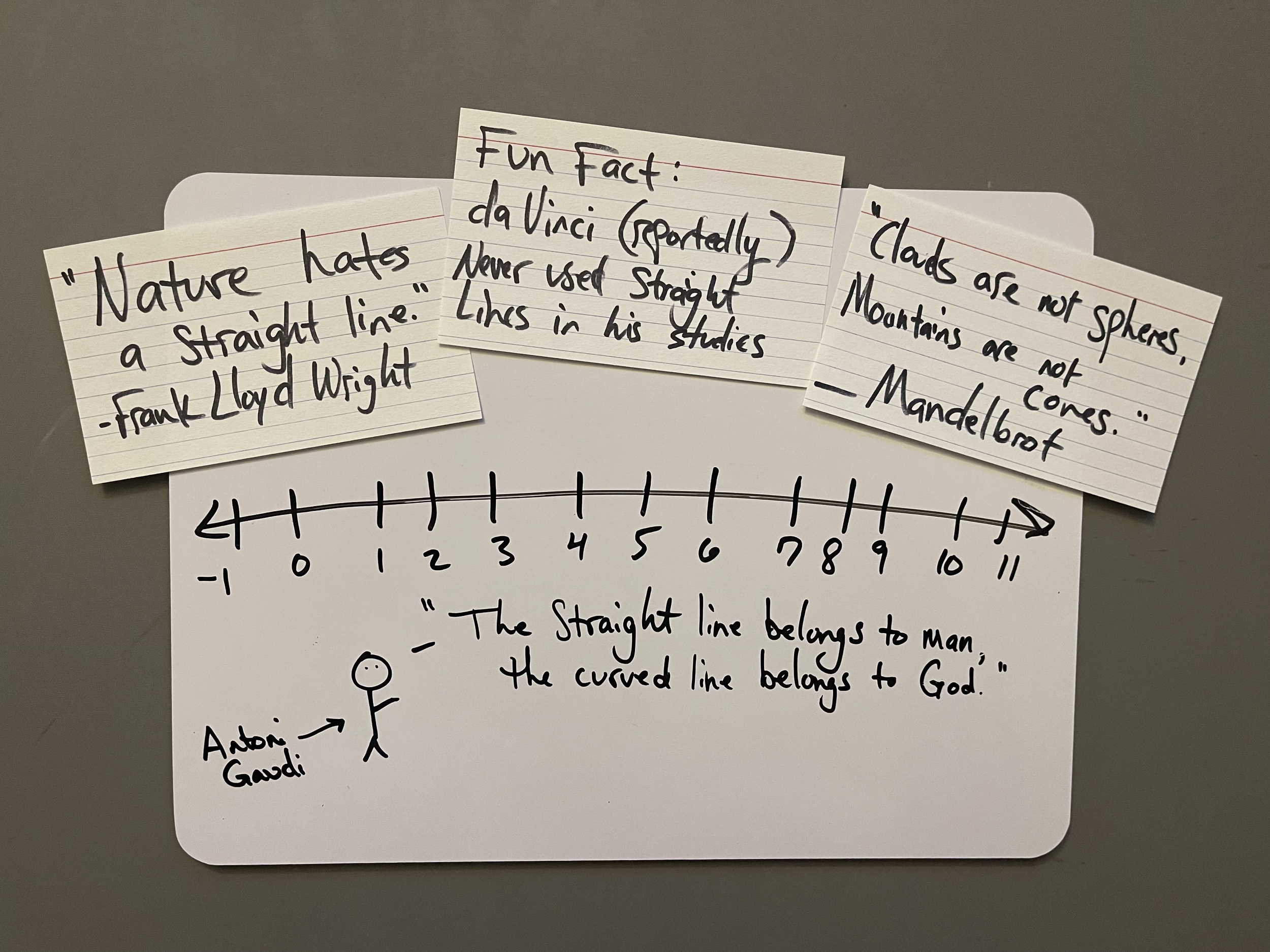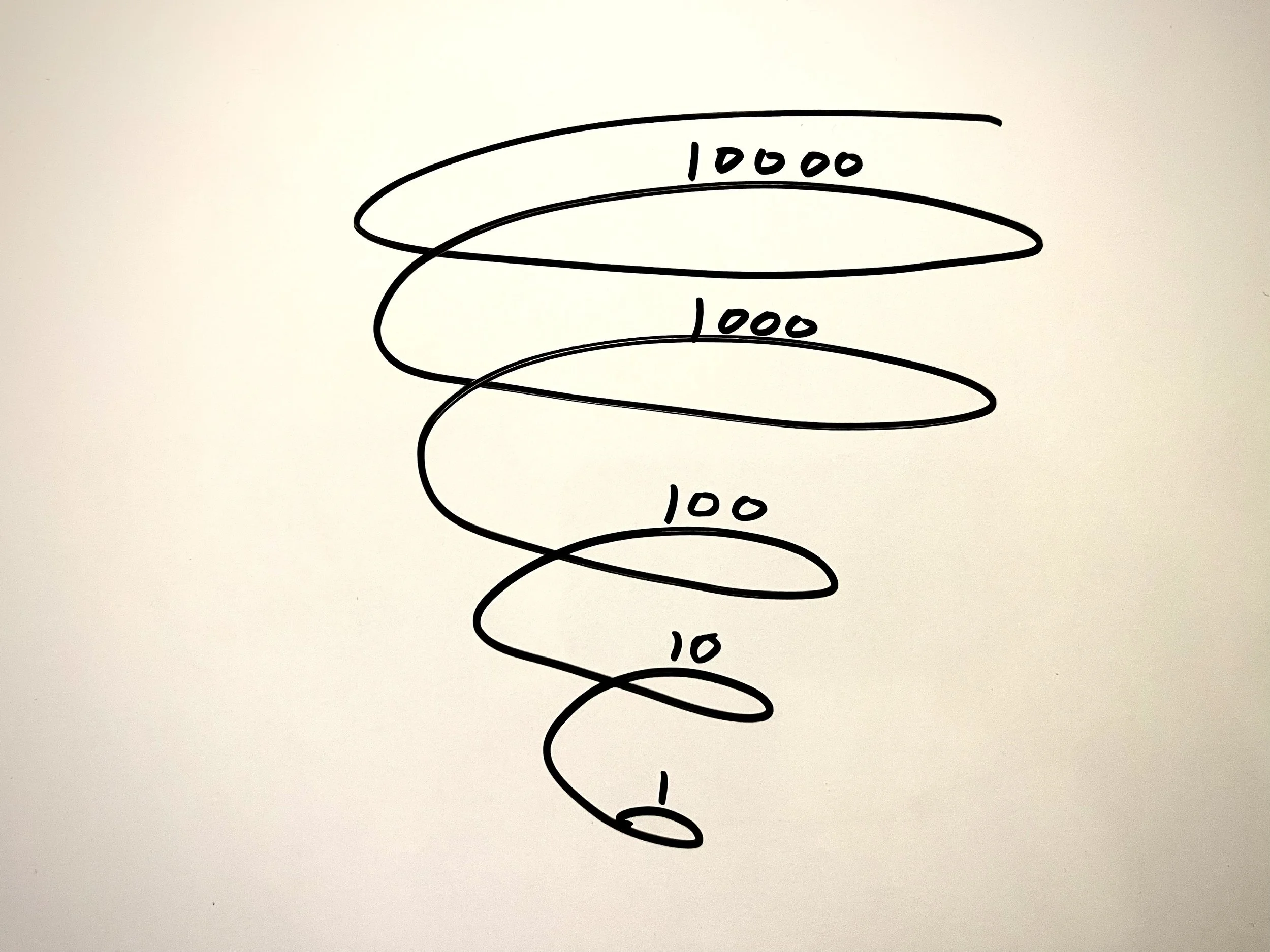Counting One to Ten
A simple door to understanding improv
This is a re-post from my Substack, but it feels right to have it here, too.
When you were two or three or four years old, you learned how to count to ten.
Perhaps it was on fingers or toes or using flash cards or singing a silly song.
But you don't remember the specifics. It was just memorization. It was "correct," so you had to know it correctly. At a certain age, you got mocked or put in a different class if the teacher called on you and you couldn't do it.
One to ten was put on a number line, a long straight line with little tick marks for each number. One was on the left, ten was on the right.
It's on a line. It's linear.
Your years of math classes took that simple idea and built layers and layers on top of it.
You probably haven't thought about counting to ten in a long time, maybe ever. It's just something you do.
But counting to ten is a door to understanding how improvisation works.
Because really, we only use nine numbers. A very limited set.
The story of counting along a line from one to ten is just that, a story. By time you pass the five, you're rounding a curve. At nine, you're completing a loop.
Ten is just one again, but at a higher level. Literally heightened. The one in the number ten now contains all the numbers below it — including itself — and continues into yet another loop through eleven. Which is the beginning of counting to ten again, but higher up.
The journey from one to ten is not a straight line. It's an upwards spiral.
When you get to one hundred, it becomes heightened to yet another level. All the work you've put into counting to one hundred is suddenly collapsed and simplified into a new One. This new One not only contains the ninety-nine other ones below it, but now there are sets of ten nested below it, too.
This new One, while appearing the same as the very first one, is not the same at all.
It's so much more than that.
When a player steps on stage, a heightening happens. Each moment contains all the layers of their life offstage, but now there's a new level of meaning. Each movement has heightened weight and significance.
There are levels to improvisation in the same way that ones differ from tens differ from hundreds.
Some games or scenes might engage lower on the spiral than others. Counting from one to ten and back again, playing with the satisfying shapes of building blocks and delightful ways they might fit together.
With time and effort, games and scenes might surpass one hundred, bringing nested sets of meaning to the stage. A heightened and condensed experience of life that can only exist in that state because of the immense effort of practice and care the players take to keep each other safe.
One level of the spiral isn't necessarily better than the other. That's not the point.
It's just important to see the spiral.
It's important to see that we're all working with a limited set, but that limited set can yield infinite variety and exploration.
It’s important to see that the utility of the stage is to support that variety and exploration in a safe environment with safe collaborators.
And living at that level of compression and significance — even for a minute or two — can't help but enliven and give fresh perspective to what happens offstage.
Improv is simple. It's just counting to ten.
The rest is play.

